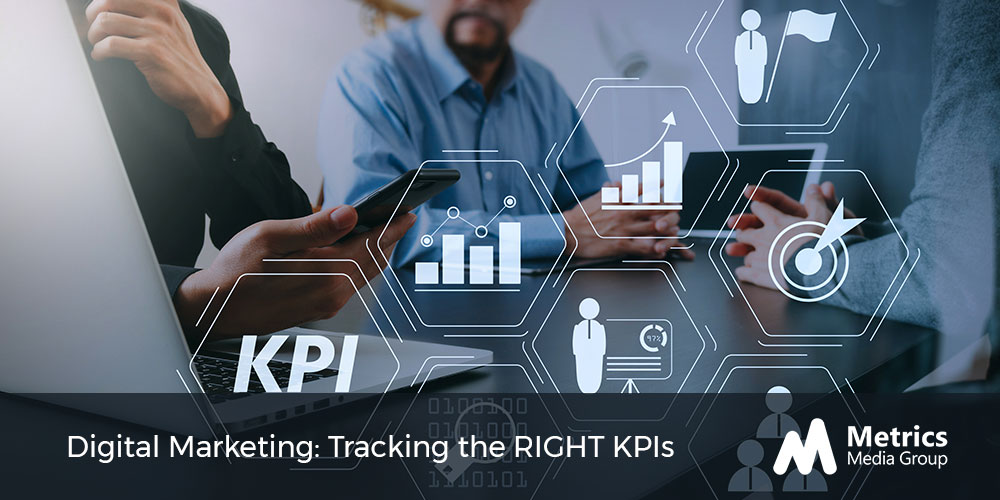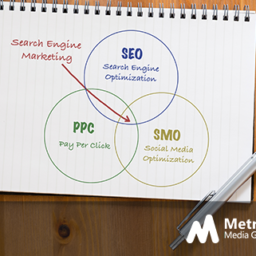
Data can be both a blessing and a curse for marketers. Now that we have the ability to capture and track such a vast amount of information, online marketers have their heads spinning. New technologies allow us to gather too much information in some cases. With access to so much data, how do you even begin to determine what is useful and beneficial and what is actually just clouding your ability to learn more about your leads and prospects?
The best way to hone in on the most valuable data is to look to Key Performance Indicators, or KPIs. These are the particular sets of data that your business needs to rely on in order to gain the most meaningful insights about your business and avoid the flood of analytics that can be so overwhelming. However, it’s important to focus on the right KPIs to make the most of your efforts. Here are a few digital marketing KPIs that can help drive your business goals.
Website KPIs
When it comes to data and analytics, the first place to turn to is your website. It is typically your primary marketing channel and can offer the most information about your customers. The following 3 metrics are especially valuable when gathering information about your website visitors.
Traffic Sources: It’s super helpful to learn how visitors are getting to your website. For instance, think about a visitor who finds your site through a pay-per-click ad vs. someone who finds you through typing a search term into Google vs. someone who visits you through your Facebook page, etc. Tracking this metric can help you learn more about which sources are driving the most traffic so that you can funnel a proportionate amount of marketing money into the right places. If you are getting all your traffic from organic search, you might be able to scale back on your pay-per-click campaigns. This also helps you identify areas that need improvement so you can capitalize on a variety of campaigns.
Exit Pages: This is another helpful metric because it tracks the last page a user visited before leaving your website. If users are coming to your home page and then leaving right away, that tells you that you need to do some testing to figure out why it doesn’t encourage them to spend more time on your page. Likewise for other pages. It can also help you uncover other issues, such as slow load times, cumbersome checkout processes, etc. It’s not an exact science but you can hypothesize as to what elements on a certain page are unappealing to visitors.
If you need help determining which KPIs your business should be tracking, we can help!
Contact us or call us directly at 1-866-477-4420.
New vs. Return Traffic
One of the golden rules of marketing is the 80 / 20 Rule – which states 80% of your revenue comes from 20% of your leads and prospects. That means, while it’s great to drum up new customers, you want to be sure you are working to maintain and delight your existing traffic as well. This metric lets you track visitors who have been to your site before vs. those who are visiting for the first time to make sure you have a good mix of both.
Pay-Per-Click (PPC) KPIs
Pay-per-click, or PPC, campaigns are an important part of any digital marketing strategy because they put your message in front of new and relevant customers. While it’s easy to measure the simple “cost per click,” you can also derive more meaning from additional KPIs.
Cost Per Conversion: It doesn’t do you much good to have people click on your ads if they don’t end up turning into lead or taking another desired action. It’s also important to track cost per conversion so you can learn the actual ROI of your ads. By learning how many users ended up signing up for your newsletter, requesting more info or making a purchase, etc. you can better measure the effectiveness of your PPC campaign and landing pages. You get to define whatever constitutes a conversion – it could be making a phone call, submitting lead information, downloading an ebook or another tangible action.
Impression Share: Impression share is the number of impressions your ads are getting – or the number of times they appear in front of a user. You can compare this to the potential number of impressions you could be getting in order to determine whether you need to up your budget, make your ads more relevant or implement other changes to get your ad seen by more people.
Click-Through Rate: Click-through rate, or CTR, lets you measure not only the people who see your ad but the ones who actually click on it. You want to aim for a high CTR because those are the people who actually end up on your site. You can learn a lot about the types of ads that work with your audience by analyzing which ones have the highest CTR.
Social Media
Many businesses have trouble knowing which social media channels to focus on. Tracking the effectiveness of campaigns on various platforms can help you determine how to allocate your marketing dollars. These three metrics can help give you some direction.
Shares: It’s great to generate likes on your posts, but shares are even better because it means a user is more engaged and also that they are generating further views from their link.
Comment Sentiment: Likewise, it’s great to get comments, but if they’re all negative you aren’t doing yourself any favors. You can follow metrics on positive vs. negative comments on social media in order to gauge how your business is being perceived by users.
Inbound Links: A great way to monitor how much traction your brand is getting on social media is to monitor inbound links – these are any other accounts that are linking back to your business, via their page directly, a blog post, etc. The more inbound links you have from high quality sources, the higher you will rank in search engines.
If you need help determining which KPIs your business should be tracking, we can help!
Contact us or call us directly at 1-866-477-4420.











